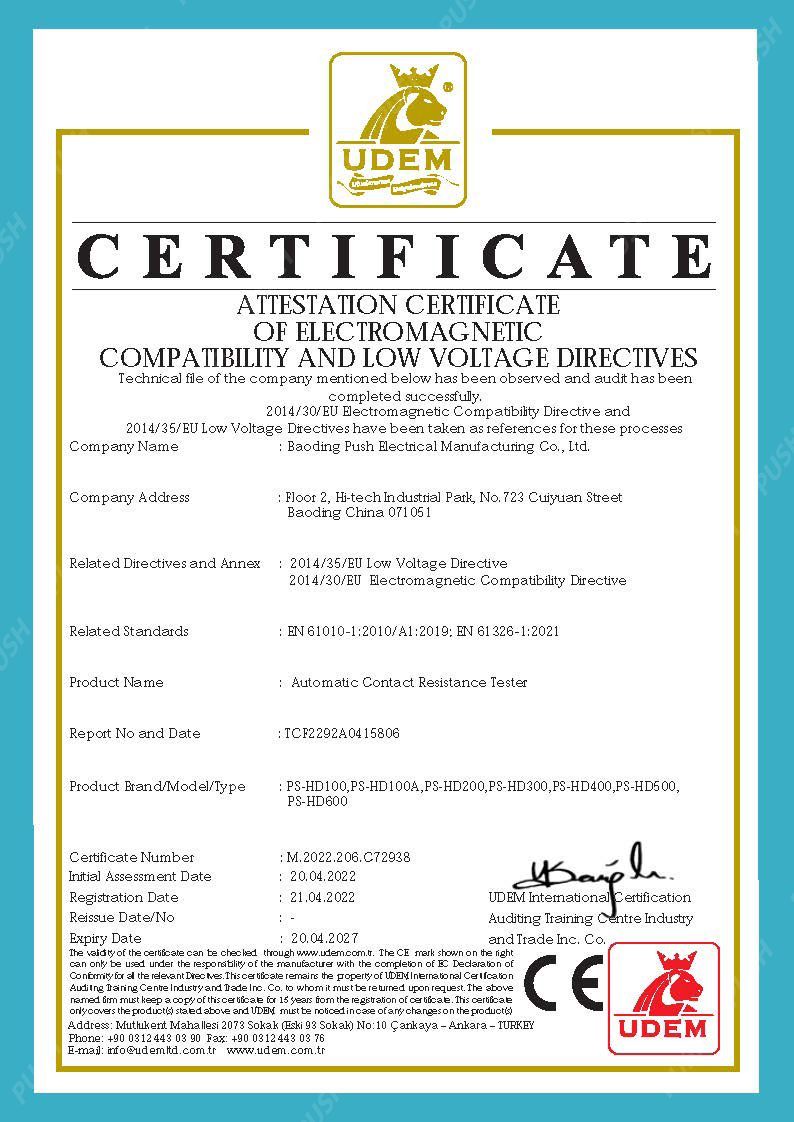 English
English


Understanding the Fundamentals of DC Dielectric Testing Methods and Applications
Understanding DC Dielectric Testing Principles and Applications
Dielectric testing is a crucial procedure in the evaluation of electrical insulation materials, particularly in high-voltage applications. Among the various methods employed, DC (Direct Current) dielectric testing stands out due to its simplicity and effectiveness. This article delves into the principles, methodologies, and applications of DC dielectric testing, underscoring its significance in ensuring the reliability and safety of electrical systems.
Principles of DC Dielectric Testing
At the core of DC dielectric testing is the principle of measuring the resistance and capacitance of insulation materials subjected to a direct current voltage. The primary goal is to assess the dielectric strength and integrity of the insulation, which is critical for preventing electrical failures that can lead to equipment damage or safety hazards.
When a direct current is applied to an insulating material, it experiences an electric field that induces polarization. This polarization results in a current flow through the material. The measurement of the resultant current is crucial, as it allows engineers to calculate the insulation resistance (IR) and polarization index (PI) of the material. These parameters are vital indicators of insulation health.
Methodology of DC Dielectric Testing
The DC dielectric test typically involves several steps. Initially, the insulation system is isolated, and the test voltage is applied. The voltage level is usually determined based on the rated voltage of the equipment, often exceeding it to ensure a thorough evaluation of the insulation's capabilities.
The test duration can vary, but common practices entail applying the voltage for 1 minute or longer. During this time, the current flowing through the insulation is monitored. The insulation resistance is calculated using Ohm’s law, where resistance (R) equals the voltage (V) divided by the current (I).
Another essential metric is the polarization index (PI), which is determined by taking the insulation resistance at two different intervals, typically at 1 minute and 10 minutes. The PI is calculated using the formula
dc dielectric test

\[ \text{PI} = \frac{IR_{10}}{IR_{1}} \]
where \(IR_{10}\) and \(IR_{1}\) are the insulation resistances measured at 10 minutes and 1 minute, respectively. A PI value greater than 2 is generally considered good, indicating stable insulation without excessive moisture or contamination.
Applications of DC Dielectric Testing
DC dielectric testing is employed across various sectors, including power generation, transmission, and industrial applications. It plays a pivotal role in the maintenance and commissioning of electrical equipment such as transformers, cables, and switchgear. By identifying insulation flaws, engineers can take proactive measures to prevent potential failures.
In power generation, for instance, regular DC testing of transformers ensures that the insulation remains intact, thus avoiding outages and ensuring continuous operation. Similarly, in the realm of renewable energy, such as wind and solar power, DC dielectric testing is essential for the monitoring and maintenance of inverters and other high-voltage components.
Furthermore, the DC dielectric test is advantageous in diagnosing insulation degradation caused by factors like moisture ingress, thermal stress, and electrical stress. It is also employed in quality control during the manufacturing of insulating materials, ensuring that only reliable components are used in electrical systems.
Conclusion
In conclusion, DC dielectric testing serves as a vital tool in the electrical engineering domain, providing critical insights into the insulation condition of various electrical components. Through its principles and methodologies, this testing approach effectively evaluates the resistance and overall health of insulation materials, aiding in the prevention of electrical failures. As technology continues to advance, the relevance and application of DC dielectric testing will undoubtedly grow, ensuring the safety and reliability of electrical systems in an increasingly electrified world. Ultimately, adopting rigorous testing standards not only extends the lifespan of equipment but also enhances operational efficiency and safety across multiple industries.
-
Differences between open cup flash point tester and closed cup flash point testerNewsOct.31,2024
-
The Reliable Load Tap ChangerNewsOct.23,2024
-
The Essential Guide to Hipot TestersNewsOct.23,2024
-
The Digital Insulation TesterNewsOct.23,2024
-
The Best Earth Loop Impedance Tester for SaleNewsOct.23,2024
-
Tan Delta Tester--The Essential Tool for Electrical Insulation TestingNewsOct.23,2024





